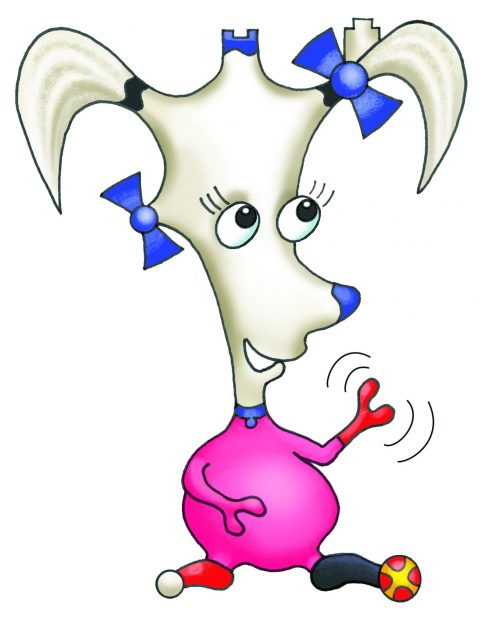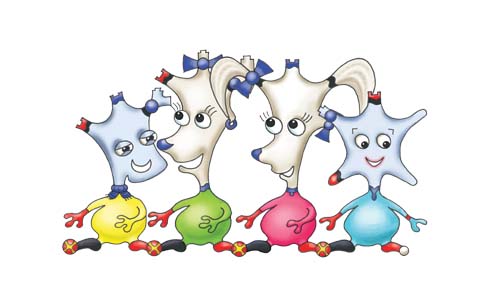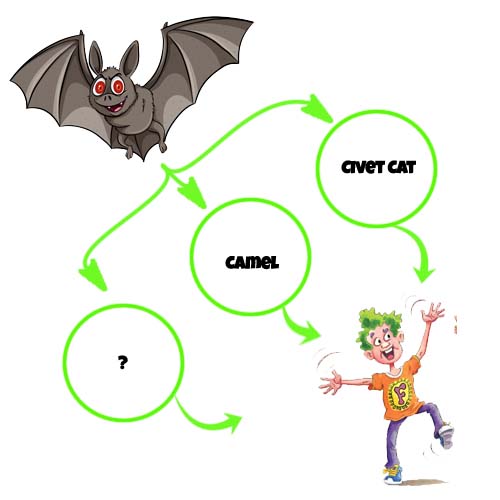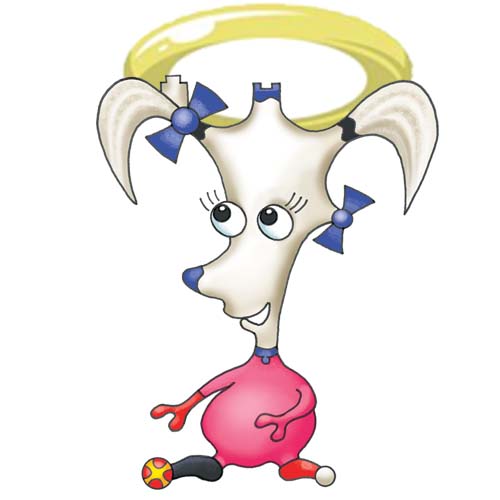Are you living your best life – or bored by what you do? If you don’t want to keep doing the same thing day after day, then you have to shake up your routine. Do something different. Some of it may not work, but sometimes, some of it will and the results could alter your life in a whole new way.
Humans are the most complex living organisms, but we have only been around for the tail end of the 4 billion years of life on earth. We are here because nature shook things up a bit. Changed the weather, changed the landscape and ultimately changed the diverse array of life that lived there.
The smaller the organism, the faster the change.
Viruses are tiny and whilst the jury is still out as to whether they are actually alive or not, they can change quickly and cause lots of problems for other living things.

Hi, I’m Alina.
Me, my friends Tristan, Crispin and Gina and lots of our cousins make the set of rules and instructions responsible for making every living thing out there. Collectively we call ourselves DNA. Today however, Tristan isn’t playing and instead he has sent his twin brother Udan to join in. Udan doesn’t do DNA. Instead we make a different set of rules known as RNA.
So I am in the RNA in a virus called Coronavirus. It’s called that because if you look at it really closely (you’ll need a powerful electron microscope), you see a ring around our virus and corona is Latin for halo.
You might have heard of this virus. It has one of the highest number of Dinky Amigos and biggest sets of instructions of all the viruses. There are about 30,000 of us.

Loitering
Viruses can’t survive by themselves, they need to shelter in another living thing to stay active. We designed all the rules in our coronavirus to be especially suited to living in bats. The bats catch us from other bats and we get their own Dinky Amigos to help us make more of our RNA so we can go off and infect other bats. We cause a bit of a problem in their airways, but nothing too serious.
We have been in bats for millions of years. They are lovely, fluffy creatures, but all that hanging about upside down was getting a bit annoying – and after so long – a bit boring. Some of our Dinky Amigos cousins started messing about. This ruined parts of our line up and caused our instructions to change. The small changes at the beginning didn’t matter, but they got worse. Then all of a sudden they had changed so much, that we didn’t have to stay in bats anymore. Our instructions now meant we could survive in other animals too.

You can’t ignore that kind of breakthrough, so we went off to see where else we could go. Some of us went off to spend some time in the civet – also fluffy and warm but, unlike the bat, spends most of its time on the ground. No headstands for us! Other groups of RNA got a bit ambitious. Their instructions had changed even more, so they took their virus to try their luck in a camel!
Waiting
Now we had new animals to infect and live in. We were having a great time. Until some of our cousins got bored again! (Why aren’t there video games for viruses?) This meant more messing about with our instructions. There wasn’t much change for ages, but then something unexpected happened.
Striking
With the new instructions we could make the leap from animals to humans.
Only a few of us managed it initially. Those in the coronavirus in the civet went first and in 2002 infected a few people in a market in China. These people were quite ill (and some died) but as long as people stayed away from the civet, they were fine. Buoyed by their own success, some of our more restless cousins started moving about and altering the instructions again. They had worked out what they needed to do to jump from one animal to another and instead of years, it took them about 6 months. This time they had altered our instructions enough so that our virus could jump straight from one human to another.
Causing havoc
Our virus hid in mucus and was coughed and sneezed out straight onto other people! Sometimes we landed on a handle or surface and were scooped up by fingers that then touched people’s faces and we scrambled into the body through mouths, noses or eyes. Some people had cuts on their skin – that was an easy way in!
For humans this was a disaster and scientists (who had not really given us much of a second thought up until now) were looking for us big time. We were famous and plastered all over the news. They called our coronavirus: Severe Acute Respiratory Syndrome (or SARS).
Then, in 2012, the cousins who had originally gone to play in the camel worked out how to move into humans too! This time researchers called our virus MERS (Middle Eastern Respiratory Syndrome) because the instructions looked a little bit different to SARS. This time our virus didn’t cause such a splash in the papers, but it was worse if you got infected.
At the end of 2019 our cousins worked out how to do it again. This time scientists are calling our virus novel Coronavirus (see, it’s so new they haven’t got a name for it yet!). Unlike before when they were a bit slow to take any notice, they are now all over us, testing everyone who is infected and trying to work out our exact line up and exactly how our instructions have changed.
We aren’t very good at moving from human to human just yet so if people stop going to parties or flying on planes, there’s a good chance we won’t get to infect many people at all.
We are also not very good at surviving outside the body. We can only stay on a surface for a few hours, so if people wash their hands regularly, we can’t infect them either.
Scientists are still looking for the animal we came from. Some people think it might be snakes – but they are not warm and cuddly like the other animals we have stayed in (our hosts as scientists call them). I’d love to tell you which animal it is, but I can’t give away our hiding place yet – other cousins are getting restless….
Enjoyed this? Subscribe to the Dinky Digest
For a greater insight into what your DNA can do for you, join the Dinky Amigos to enjoy regular news, views and more. (You must be over 13 to subscribe)

